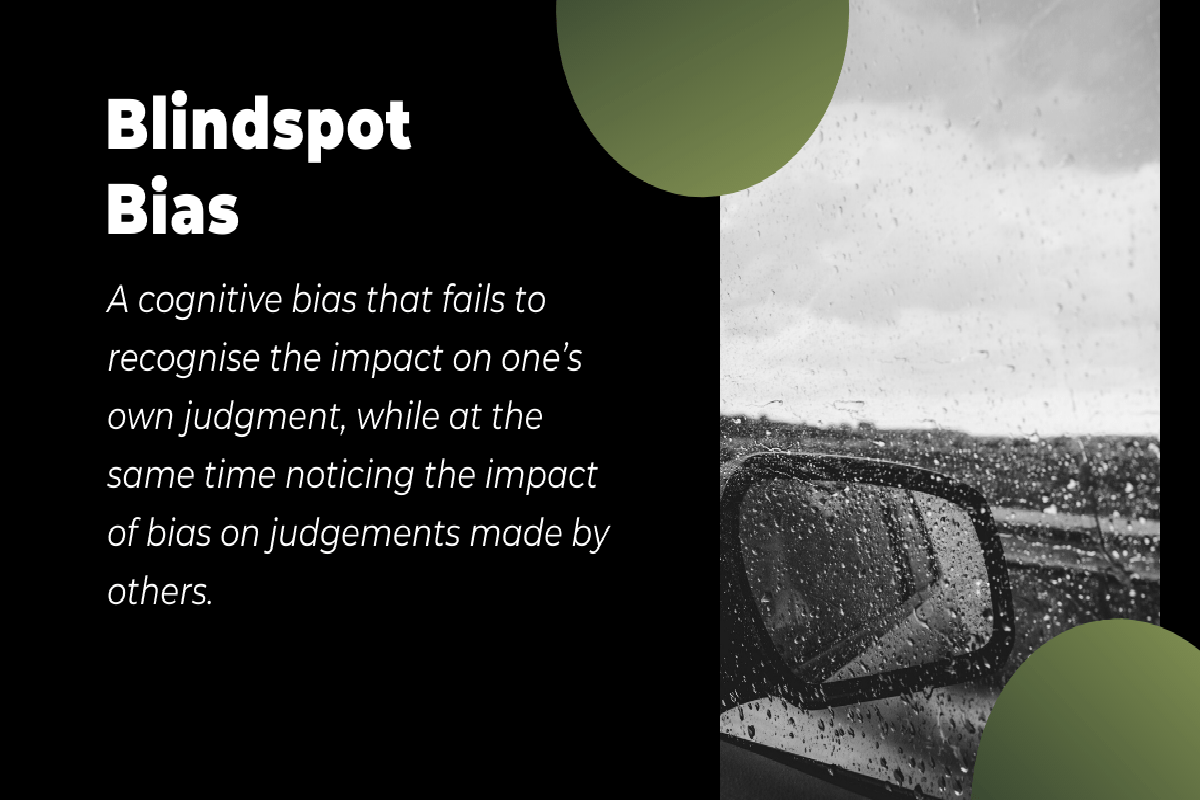The blind spot bias is a cognitive bias that occurs when individuals recognize cognitive biases in others more readily than they do in themselves. People tend to believe they are less biased and more rational than others, which can lead to overconfidence in their own judgment and decision-making.
Explanations:
The blind spot bias is related to the cognitive bias known as the “bias blind spot,” where individuals are often unaware of their own biases but readily recognize biases in others. This bias can stem from a desire to see oneself in a positive light and attribute negative traits or errors to others.
Examples:
Political Bias: A person may believe they are open-minded and impartial in their political views, while accusing others of being biased.
Driving Habits: Someone might think they are an excellent driver and make sound judgments, while criticizing other drivers for their perceived mistakes.
Workplace Decisions: An individual may assume they are fair and objective in making workplace decisions, while believing that their colleagues are biased.
Solutions:
Self-Reflection: Engage in self-reflection to recognize your own cognitive biases and areas where you may be less objective than you believe.
Seek Feedback: Be open to feedback from others who can provide a more objective perspective on your biases.
Mindful Assessment: Continuously assess your judgments and decisions with a critical eye, considering the potential influence of cognitive biases.
Humility: Cultivate humility and acknowledge that everyone, including yourself, is susceptible to cognitive biases.
Addressing the blind spot bias involves recognizing the tendency to see biases more readily in others than in oneself and actively working to identify and mitigate your own cognitive biases. By embracing humility and self-reflection, individuals can make more rational and objective judgments and decisions.
